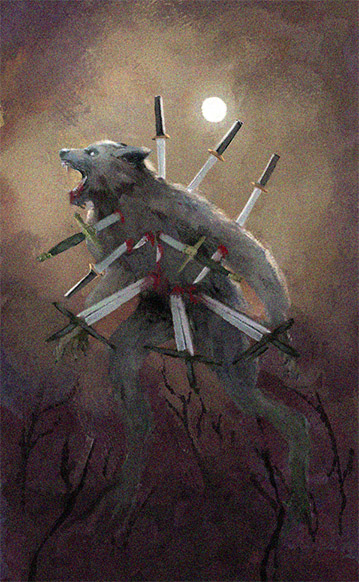Thiess of Kaltenbrun
Thiess of Kaltenbrun (d. 1692), better known as the Livonian Werewolf, or Old Thiess, was a Livonian farmhand who claimed to be a holy werewolf in the service of God.
Reputation as werewolf
In 1681, Old Theiss, then aged about 70, attempted to bring a suit in local court against another farmer he accused of being a witch in the service of the Devil. He explained to the judges that he had been injured during a visit to Hell while attempting to prevent this farmer from delivering stolen grain to Satan. Theiss added that he routinely visited Hell to fight with witches and demons in the form of a wolf. The justices tried to find the accused farmer, but discovered that no such person existed. They consequently laughed at Theiss' claims and dismissed the case.
Faith healer
As a result of the court case, Theiss gained some notoriety among the Livonian peasants, who began to visit him as a faith healer for both their animals and themselves. It was claimed he could cure almost any ailment using a prayer invoking the sun and moon combined with bread that he consecrated himself with salt. Over the course of ten years, he became a kind of folk saint. He was usually paid small amounts of money for his services, although he also accepted trades of food and other goods.
1691 trial
On April 28th, 1691, Theiss was called to the Royal Court as a result of witness testimony in an unrelated theft of money from a church. The witness mentioned that Theiss was known to be a werewolf and performed healings and divination for locals. The justices had Theiss detained and questioned him for over a year. During this time, he freely admitted to transforming into a wolf to fight against the legions of the Devil. Although the court continually caught him contradicting himself, they still believed his story due to certain elements being corroborated by other witnesses.
Transcripts of the trail strongly suggest that the man, who was now in his 80s, appeared to be spinning a story that grew ever more elaborate in an attempt to satisfy the judges' questions.
By 1692, the questioning turned to the subject of his faith healing. He admitted invoking the sun and moon while completely ignoring God and the Christian church. After the local pastor was brought in, the proceedings took a more serious tone, with Theiss being accused of heresy. He began to realize the seriousness of the charges being laid against him and, when asked for the names of people who had used his services, Old Theiss claimed to have a sudden loss of memory.
Aftermath
On 31 October 1692, Theiss was convicted of being a werewolf and of heresy for turning those who came to him for healing away from the Christian church and the power of God. He was sentenced to public flogging of twenty lashes. After his punishment, he was exiled from the Grand Duchy of Lithuania.
Nothing more is known about Theiss, but given his advanced age, he likely did not survive the winter of 1692.
